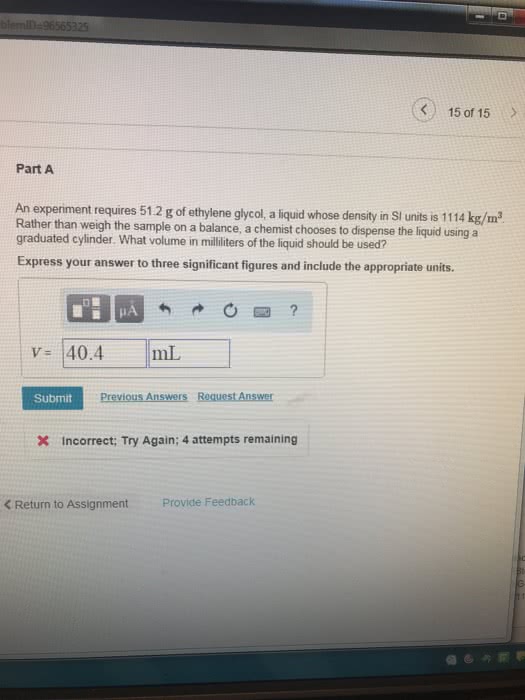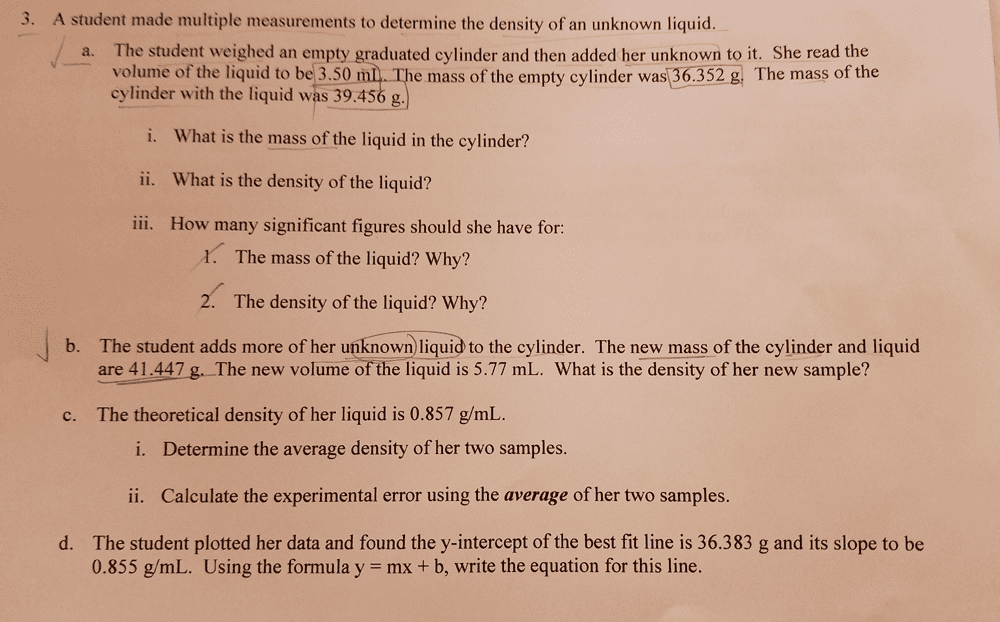(a) To identify a liquid substance, a student determined its density. Using a graduated cylinder, she measured out a 45-mL sample of the substance. She then measured the mass of the sample, finding that it weighed 38.5 g. She knew that the substance had to be either isopropyl alcohol (density 0.785 g/mL) or toluene (density 0.866 g/mL). What are the calculated density and the probable identity of the substance? (b) An experiment requires 45.0 g of ethylene glycol, a liquid whose density is 1.114 g/mL. Rather than weigh the sample on a balance, a chemist chooses to dispense the liquid using a graduated cylinder. What volume of the liquid should he use? (c) Is a graduated cylinder such as that shown in Figure 1.19 likely to afford the accuracy of measurement needed? (d) A cubic piece of metal measures 5.00 cm on each edge. If the metal is nickel, whose density is 8.90 g/cm3, what is the mass of the cube?

Figure .19.

Based on this result, the compound is the most likely toluene.

c) The accuracy of graduated cylinder is not enough this measurement, as the uncertainty in the volume measured with this flask is ±1 mL, and we need a flask with ±0.1 mL accuracy.


(a) To identify a liquid substance, a student determined its density. Using a graduated cylinder, she measured out a 45-mL sample of the substance. She then measured the mass of the sample, finding that it weighed 38.5 g. She knew that the substance had to be either isopropyl alcohol (density 0.785 g/mL) or toluene (density 0.866 g/mL). What are the calculated density and the probable identity of the substance? (b) An experiment requires 45.0 g of ethylene glycol, a liquid whose density is 1.114 g/mL. Rather than weigh the sample on a balance, a chemist chooses to dispense the liquid using a graduated cylinder. What volume of the liquid should he use? (c) Is a graduated cylinder such as that shown in Figure 1.19 likely to afford the accuracy of measurement needed? (d) A cubic piece of metal measures 5.00 cm on each edge. If the metal is nickel, whose density is 8.90 g/cm3, what is the mass of the cube?
Figure .19.
Based on this result, the compound is the most likely toluene.
c) The accuracy of graduated cylinder is not enough this measurement, as the uncertainty in the volume measured with this flask is ±1 mL, and we need a flask with ±0.1 mL accuracy.


